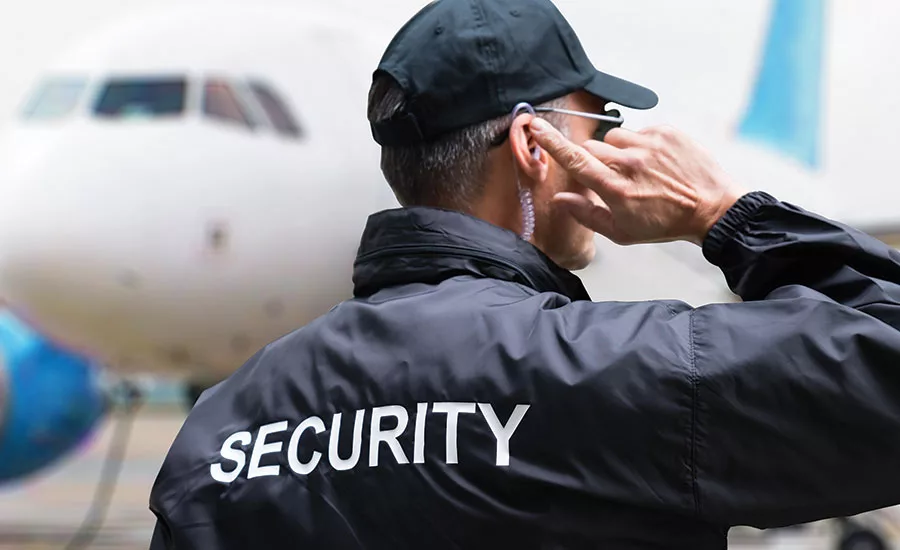Why physical security is the business of many

Failure of imagination leads to most crises. As the pandemic persists, vaccinations and vaccine resistance increases, mass shootings rise, and racial and political unrest show few signs of ebbing, seemingly impossible "what if" scenarios are our everyday reality.
But can we prevent and protect ourselves from the bad impossibilities? In my experience, if we believe it can happen, then we can look for that trouble, see around corners and potentially head off bad situations. This is why opportunities for protective intelligence analysts are growing and, as digital transformation continues, will be one of the most in-demand roles at corporations alongside cybersecurity experts.
When I started in the protection sector, intelligence was pretty analog, and innovation was slow. It takes vision, insight, curiosity, courage and grit to step into potentially harmful situations to protect others, and the game-changing efforts of many pioneers and thought leaders are forging a path to the more proactive, always-on approach to physical security emerging today. Speaking from my own experience, the evolution of protection from the typewriter and 3x5 index cards we used in my day to the astounding technological ecosystems we have now is truly incredible.
While we've only just gotten started, it's worth recognizing the influential leaders who have inspired and enabled those in the protection community to imagine the impossible. The Protective Intelligence Honors celebrates those who have driven new shifts and novel practices, developed innovative solutions, and are contributing to, influencing, and advancing the physical security and protection industry.
Clint Hill is someone who immediately came to mind when reflecting on the pioneers and thought leaders in the protective intelligence space. Some may not recognize the name, but his heroic reaction to the motorcade shooting of President John F. Kennedy and Jaqueline Kennedy in 1963 in Dallas, Texas, is credited for saving the First Lady's life. Hill will forever be remembered for leaping onto the back of the presidential limousine in an effort to protect the couple while shots were being fired. Many in the field will never face Hill's situation, but the lessons learned from this attack have shaped protective intelligence to this day. Thankfully, we've come a long way since Dallas.
"Know your comfort zone, and then avoid it like the plague," said Meredith Wilson, Founder and CEO of Emergent Risk International, LLC. These words stuck with me when I spoke with Meredith, a protective intelligence pioneer. Meredith has over 20 years of experience in international environments, the energy sector, Fortune 500 corporations and the US intelligence community. In the US government, she served as a Defense Intelligence Officer in the Pentagon and overseas. Getting stuck in your comfort zone can be the downfall of so many agents. I learned a long time ago on surveillance missions while protecting the rich and famous that you need to be looking for surveillance in order to see it. It's called situational awareness. It sounds simple enough in concept, and yet it's hard to do without focus and attention. Leaving your comfort zone is the first step to being aware of the threats around you and your business.
In the physical security space, we hear from key players that there needs to be a fusion between physical and cybersecurity to quickly identify, assess, and mitigate threats appropriately. When relevant teams have access to the same information and can work together, it becomes exponentially easier to thwart attacks and protect assets. Cynthia Hetherington, a leader in due diligence, corporate intelligence and cyber investigations, founded The Hetherington Group. She trains over 7,200 investigators, security professionals, attorneys, accountants, auditors, military intelligence professionals, and federal, state, and local agencies on best practices each year. Cynthia has told me she sees physical security evolving in the next decade and that it will be critical to create clearly defined programs for faster outcomes to prevent violence or danger to organizations.
Scott Stewart, a long-time friend and colleague who is now Vice President of Intelligence at TorchStone Global, is someone else I wholeheartedly believe has helped shape the landscape of protective intelligence. In addition to his long history of protection-related efforts, Scott played a pivotal and unforgettable role during the first World Trade Center bombing in 1993. Scott responded to the bombing and investigated the history and travel patterns of many of the suspects. His efforts and vision have profoundly impacted physical security and will undoubtedly continue to shape its future as we navigate a society full of unrest.
Finally, I'd like to mention Michael Trott, vice president, global safety and security, Discovery Land Company. Mike is an accomplished international security professional who was, for many years, a Special Agent for the Central Intelligence Agency (CIA) assigned to the protective security detail for the CIA Director and several deputy directors. He recently said to me, "Executive protection involves a person with specialized skills – as well as a particular mindset and sense of dedication – keeping another person safe, even at their own peril." This is an important aspect of physical security that technology has enhanced. The concept of close protection has been around forever, but with today's technology allowing us to monitor potential threats and see around corners, the job is becoming more automated.
While unfortunate, tragedy has traditionally been the catalyst to force change in the protection space. That said, I am continually inspired by the men and women whose remarkable vision, insight, courage, and leadership have kept countless lives safe and are influencing an industry shift to a proactive, always-on physical security approach in the public and private sectors. Regardless of your role, industry, or organization, security will always be your business.
Looking for a reprint of this article?
From high-res PDFs to custom plaques, order your copy today!







